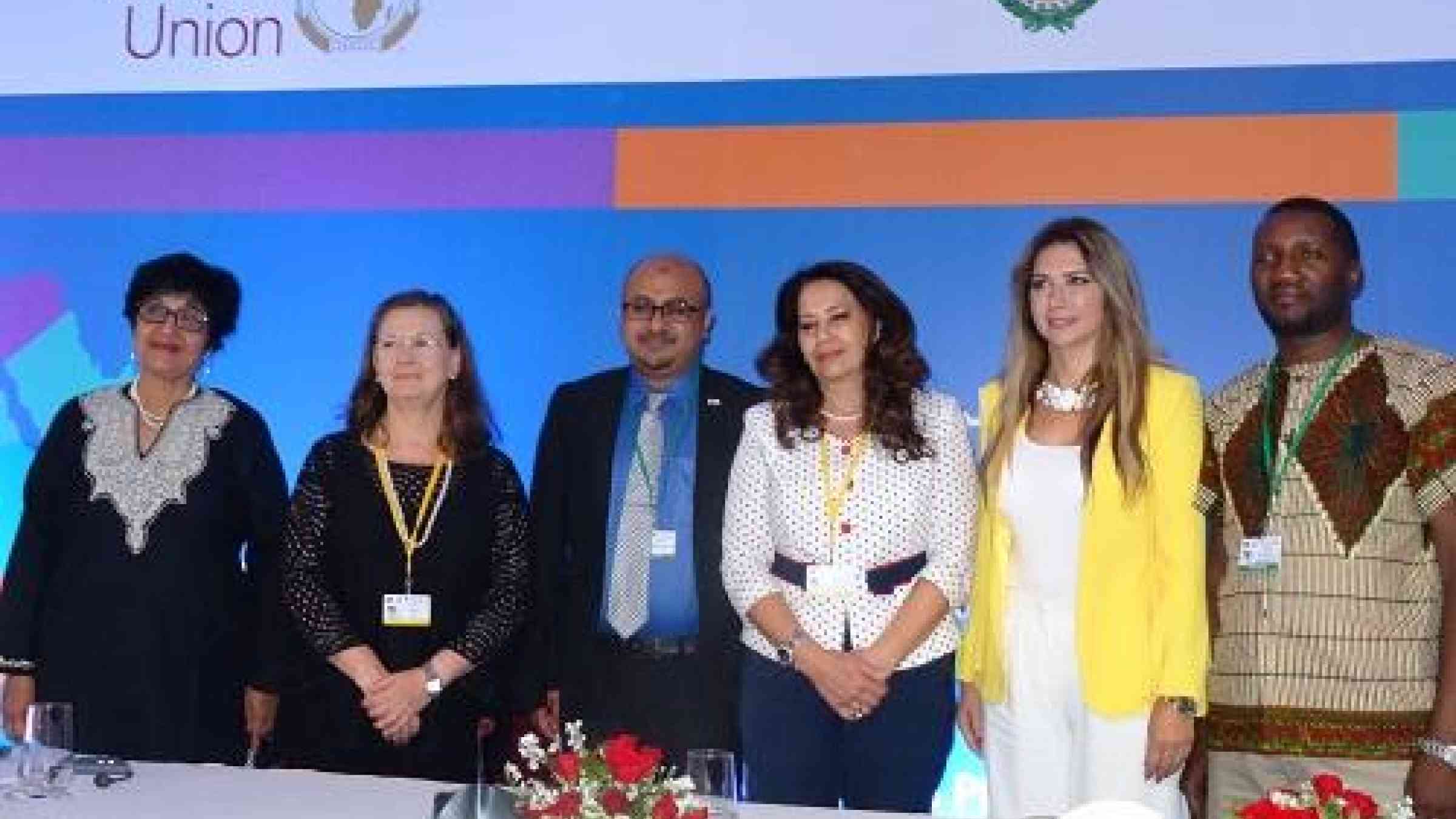Disasters reveal gender gap

TUNIS, October 12, 2018 - Women often suffer greatly in disaster situations but are also first-line responders, a debate on the eve of International Day for Disaster Reduction, was told today by an expert from UN Women.
More needs to be done to protect women’s rights in disasters and to enable them to make a greater contribution to disaster risk management, said Dr. Jean D’Çunha, of UN WOMEN Arab States, at the Africa-Arab States Platform on Disaster Risk Reduction.
Women are often small scale farmers or in poor paying jobs in agriculture and forestry with little bargaining power. Climate change and disasters were enhancing their vulnerability and leaving them open to abuse and sexual exploitation.
“Women are often the sole providers for the family and succumb to the worst forms of labour. Men have the option of migration after a disaster but women are left behind and if remittances do not come, life becomes very precarious,” Dr. D’Çunha said.
She cited Sierra Leone and Jordan as good examples of countries which take account of gender parity and inclusion in their policies on disaster management, promoting the fact that women are not just victims but can play a much bigger role.
In Morocco, the Ministry of Agriculture is training women as natural resource managers. In Yemen, thousands of women are engaged in water conservation.
Dr Richard Asaba Bagonza, Gender and DRR Researcher at Makerere University, Uganda, recalled that, worldwide, gender inequality meant that women and children are 14 times more likely to die in disaster events and comprise 75% of those displaced by disasters.
He said his extensive research in Uganda was likely applicable to other parts of east Africa.
Dr. Bagonza said that he found that high value resources were controlled by men and that women’s productive and reproductive roles left them more vulnerable to floods, landslides and other disasters.
Women were more likely to have traditional knowledge of early warning signs and men are usually more reluctant to evacuate ahead of a disaster.
UNISDR Director, Ms. Kirsi Madi, who moderated the session, observed that his findings showed that the issue of parity and inclusion went beyond gender and also affected other groups whose needs were neglected in disasters including older persons and people living with disabilities.
Research by the International Federation of Red Cross and Red Crescent Societies, found that there was not enough data or qualitative information to say if disaster law and legal frameworks work adequately to prevent sexual and gender-based violence during disasters.
IFRC inclusion expert, Mr. Amjad Saleem, said that women are generally absent from the formulation of disaster risk reduction policies and government departments for Women’s Affairs are not well integrated into disaster risk management activities.